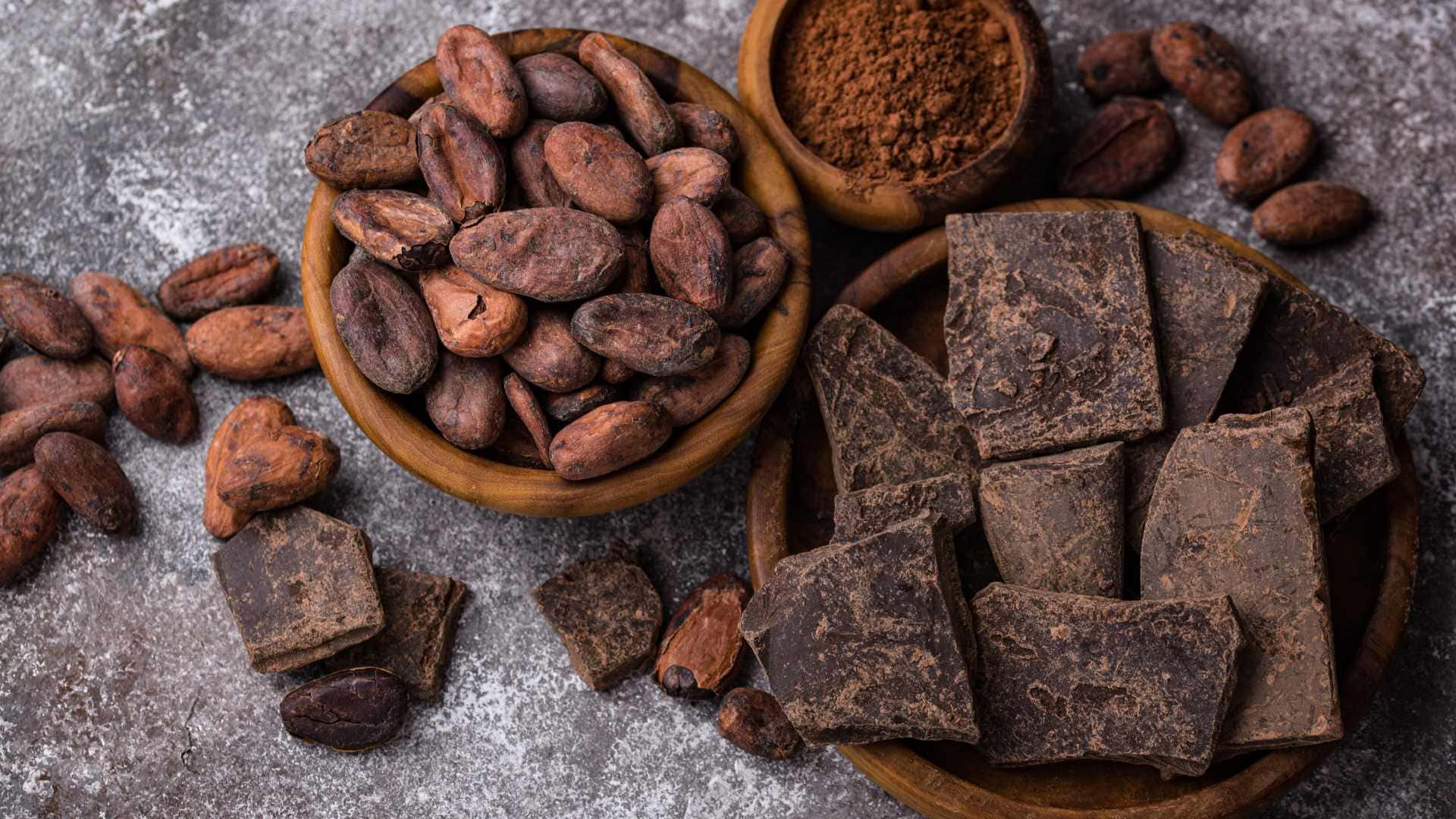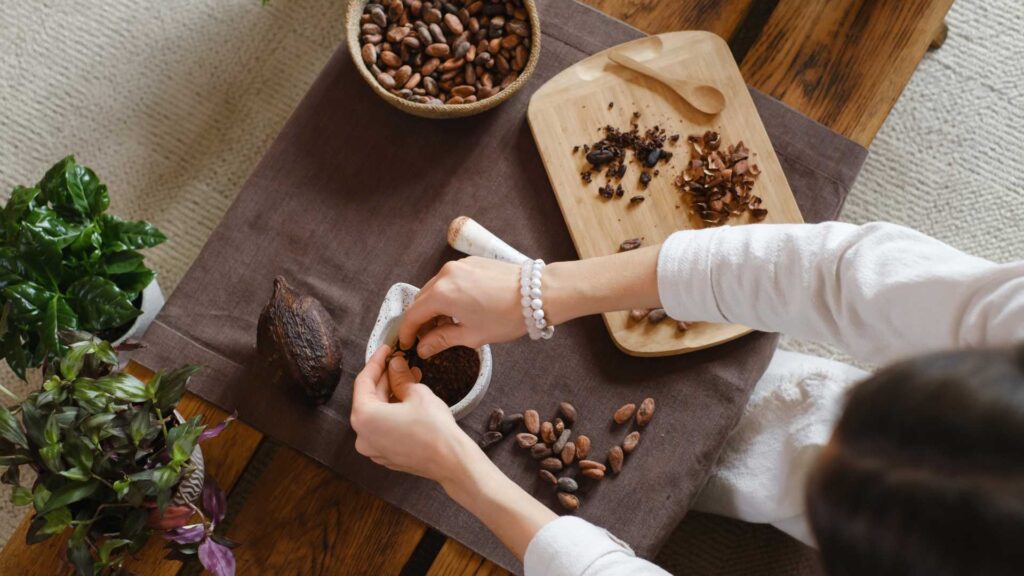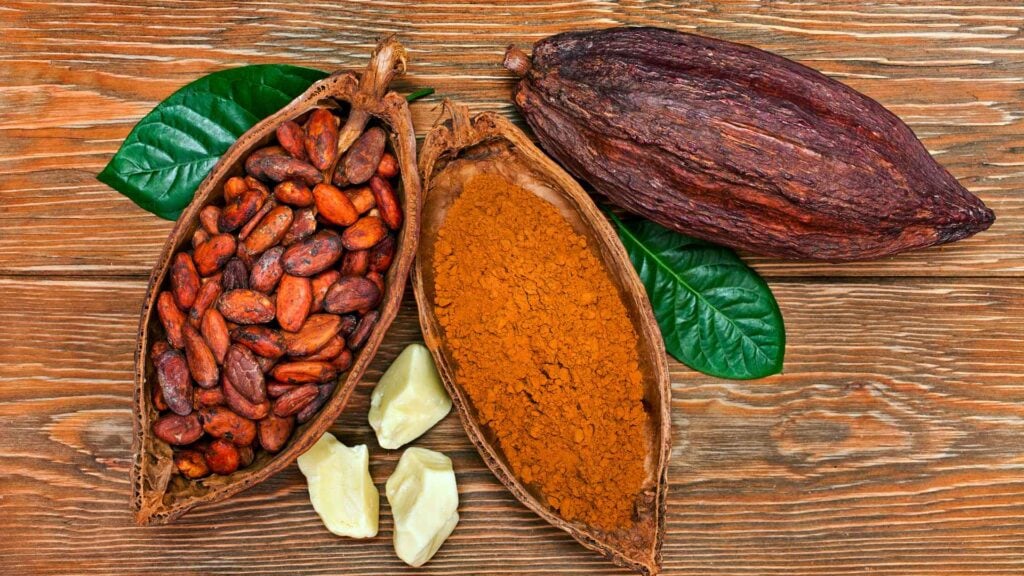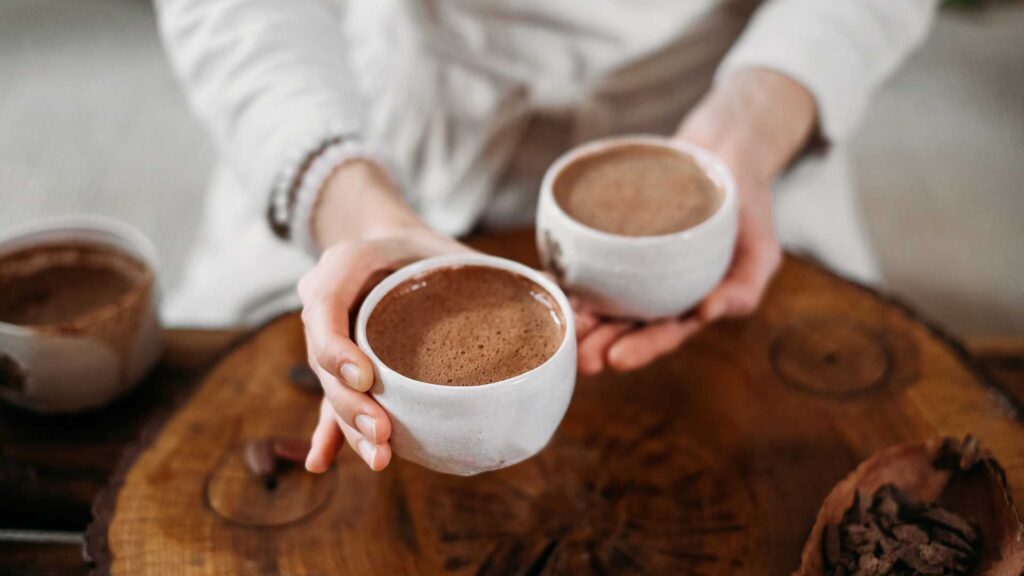Chocolate lovers and health enthusiasts often wonder whether consuming cacao with dairy is harmful. Cacao, the key ingredient in chocolate, is renowned for its rich flavour and numerous health benefits. However, when combined with dairy, questions arise about potential nutritional conflicts. This article analyses the nutritional aspects of cacao and dairy, their interaction, and alternative ways to enjoy cacao without compromising its benefits.
Summary
Consuming cacao with dairy raises some nutritional concerns, particularly regarding the absorption of antioxidants and iron. While dairy can interfere with these benefits, enjoying cacao and dairy in moderation is generally safe and can still be part of a balanced diet. For those looking to maximise the health benefits of cacao, alternatives such as dark chocolate, plant-based milks, or pairing cacao with fruits and nuts are excellent options. Ultimately, variety and moderation in your diet are key to enjoying these flavours without compromising nutrition.
Understanding Cacao's Nutritional Power
Cacao is often called a "superfood" due to its impressive nutritional profile. It is the raw, unprocessed form of chocolate and contains various nutrients that contribute to overall health.
High Antioxidant Content
Cacao is loaded with antioxidants, which protect the body against oxidative stress and inflammation. The flavonoids present in cacao are associated with improved cardiovascular health and a lower risk of certain cancers. These antioxidants help protect cells and tissues from damage, improving health outcomes.
Natural Mood Booster
Cacao contains compounds like serotonin precursors and phenylethylamine (PEA), which enhance mood. PEA, in particular, is a substance the body produces when experiencing excitement or love, leading to increased endorphin levels and a boost in happiness.
Rich In Magnesium
Magnesium is essential for over 300 metabolic processes, including muscle function, nerve operation, and bone health. Cacao is a rich source of magnesium, making it an important addition to a balanced diet.
Source Of Iron And Fibre
Cacao provides a significant amount of non-heme iron, which is vital for oxygen transport in the blood and for preventing anemia. Additionally, its high fibre content aids digestion and promotes a healthy digestive system.
Contains Healthy Fats
Cacao is rich in healthy fats, particularly oleic acid, a monounsaturated fat found in olive oil, supporting heart health. Although cacao contains some saturated fats, most are stearic acid, which does not raise cholesterol levels.
Supports Brain Health
Thanks to its flavonoids, regular consumption of cacao has been linked to improved brain health. These compounds enhance blood flow to the brain, supporting cognitive function and reducing the risk of neurodegenerative diseases.
Cacao is a delicious treat and a powerhouse of nutrients that can enhance mood, support cardiovascular health, and contribute to overall well-being when consumed in moderation.
The Nutritional Profile Of Dairy
Dairy products are a staple in many diets due to their rich nutritional content. They are often recommended as part of a balanced diet, providing essential nutrients that support overall health.
Abundant In Calcium
Dairy is a primary calcium source for building and maintaining strong bones and teeth. Calcium is also critical in muscle function, nerve transmission, and blood clotting.
High-Quality Protein
Dairy products offer high-quality proteins like casein and whey, vital for tissue repair, immune function, and muscle maintenance. These proteins contain all the essential amino acids that our bodies need.
Rich In Vitamin D
Vitamin D is often added to dairy products to enhance bone health, as it helps the body absorb calcium. This "sunshine vitamin" is important in areas with limited sunlight exposure.
Contains Healthy Fats
Dairy contains a mix of saturated, monounsaturated, and polyunsaturated fats. While saturated fats should be consumed in moderation, the unsaturated fats found in dairy contribute to heart health and provide energy.
Packed With B-Vitamins
Dairy products are rich in B vitamins, including B12, which is necessary for nerve function and red blood cell formation, and B2 (riboflavin) and B3 (niacin), which support energy metabolism.
Probiotic Potential
Fermented dairy products like yogurt and kefir contain probiotics, which help maintain a healthy gut microbiota, improving digestion and supporting the immune system.
Lactose Content
Lactose, the sugar found in dairy, can be difficult to digest for some people. Lactose-intolerant individuals may need lactose-free dairy products or supplements to aid digestion.
Dairy products, rich in calcium, protein, and essential vitamins, play a vital role in a balanced diet. However, dietary needs and tolerances should be considered when incorporating dairy into daily meals.
How Cacao And Dairy Interact
When cacao and dairy are combined, they create beloved treats like milk chocolate and hot cocoa. However, the interaction between these two ingredients can have nutritional implications.
Antioxidant Absorption
The antioxidants in cacao may be less effectively absorbed when combined with dairy. Dairy proteins can bind to these antioxidants, potentially hindering their absorption in the intestines. This could reduce the antioxidant benefits that cacao typically provides.
Calcium And Iron Interaction
Cacao is a good source of non-heme iron, but the calcium in dairy can limit its absorption. This interaction is particularly important for individuals who rely on plant-based iron sources, as it may affect their ability to meet their iron needs.
Flavor And Texture Synergy
On a sensory level, combining cacao with dairy enhances the flavour and texture of the resulting products. Dairy adds a creamy richness that balances the bitterness of cacao, creating a more indulgent experience.
Nutritional Trade-Offs
While the interaction between cacao and dairy might reduce some nutritional benefits, consuming them together still provides energy and satisfies cravings. The key is to enjoy these combinations in moderation.
Mindful Consumption
The best approach to enjoying cacao and dairy together is through mindful consumption. By being aware of the nutritional interplay, you can enjoy these treats while maintaining a balanced diet.
While there may be some concerns about the interaction between cacao and dairy, enjoying these foods in moderation can still be part of a healthy diet. The key is finding a balance that allows you to savour the flavours without compromising nutrition.
Exploring Alternative Combinations With Cacao
Several alternative combinations can be delicious and nutritious for those looking to enjoy the benefits of cacao without dairy.
Dark Chocolate
Dark chocolate, with a higher cacao content and minimal dairy, offers a more intense flavour and higher antioxidant benefits. It's a great choice for those looking to maximise the health benefits of cacao.
Plant-Based Milks
Plant-based milks like almond, coconut, oat, and soy milk provide creamy alternatives to dairy. Each type of plant-based milk offers unique flavours and textures, making them excellent companions to cacao in various recipes.
Cacao And Fruits
Pairing cacao with fruits like berries, oranges, or bananas creates a flavorful and nutritious combination. The fruit's natural sweetness complements the cacao's bitterness and boosts antioxidants.
Nut And Cacao Combinations
Nuts like almonds, cashews, and hazelnuts pair well with cacao, adding richness and crunch. The healthy fats and proteins in nuts enhance the nutritional profile of cacao-based treats.
Spiced Cacao
Adding cinnamon, cardamom, or chilli to cacao infuses it with warmth and depth. Spices enhance the flavour and bring health benefits, making the combination even more beneficial.
Herbal Infusions
Herbs like mint or lavender can be combined with cacao to create a refreshing and aromatic experience. These herbal infusions add a unique twist to traditional cacao recipes.
Sweet And Salty Cacao
A pinch of sea salt can elevate the flavour of cacao, creating a delightful balance between sweet and salty. This combination is particularly satisfying for those who enjoy contrasting flavours.
Exploring these alternative combinations allows you to enjoy the rich flavours of cacao while aligning with your nutritional goals. Whether you prefer dark chocolate's intensity or plant-based milk's creaminess, there are plenty of options to satisfy your cacao cravings.
Balancing Taste And Nutrition
Combining cacao and dairy is an exercise in balancing taste and nutrition. Here's how you can enjoy this combination without compromising your health.
Relishing The Flavors
The rich flavours of cacao and the creaminess of dairy create a delicious experience. It's important to savour each bite and enjoy these foods' sensory pleasure.
Nutritional Awareness
Being mindful of the nutritional interplay between cacao and dairy can help you make informed choices. By understanding how these ingredients affect each other, you can enjoy them in a way that supports your overall health.
Practicing Moderation
Moderation is key to enjoying cacao and dairy without overindulging. A small amount of milk chocolate or a cup of hot cocoa can be a satisfying treat that fits into a balanced diet.
Embracing Variety
A varied diet with a wide range of foods ensures you get all the nutrients your body needs. You can create a diet that supports overall health by including cacao and dairy in moderation, along with fruits, vegetables, and whole grains.
Making Conscious Choices
Choosing high-quality cacao and dairy products can enhance both flavour and nutrition. Opting for products with less added sugar and more natural ingredients allows you to enjoy these foods without unnecessary additives.
Experimenting With Recipes
Trying new recipes and combinations can make your diet more enjoyable and nutritious. Whether making a cacao smoothie with almond milk or spiced hot cocoa, experimenting in the kitchen can lead to delicious and healthy discoveries.
Balancing taste and nutrition is an ongoing process. By making mindful choices and practising moderation, you can enjoy the rich flavours of cacao and dairy while maintaining a healthy and balanced diet.
Conclusion
Combining cacao with dairy raises valid concerns regarding antioxidant and iron absorption. However, enjoying this combination in moderation as part of a balanced diet is unlikely to have adverse effects. Exploring alternative pairings, such as dark chocolate or plant-based milk, can help maximise the nutritional benefits of cacao while minimising potential downsides.
The key to a healthy diet is variety and balance. This approach allows for occasional indulgences without compromising nutritional integrity. Whether you enjoy cacao with or without dairy, being mindful of your overall dietary choices is essential for maintaining good health.
Frequently Asked Questions About Cacao
Consuming cacao with dairy is not inherently unhealthy. However, dairy may interfere with the absorption of cacao's antioxidants. Moderation and mindful eating are key.
For some individuals, combining dairy with cacao can cause digestive discomfort, especially if they are lactose intolerant. Lactose-free alternatives are available for those with sensitivities.
Dairy may reduce the absorption of certain antioxidants in cacao, but the overall impact is still being studied. Enjoying cacao in moderation with dairy is generally considered safe.
If you have a dairy allergy, avoiding cacao products containing dairy is best. Opt for dairy-free alternatives like almond or coconut milk.
Several dairy-free alternatives, including plant-based milk like almond, soy, and oat milk, are available. These can be used in recipes that traditionally include dairy.








